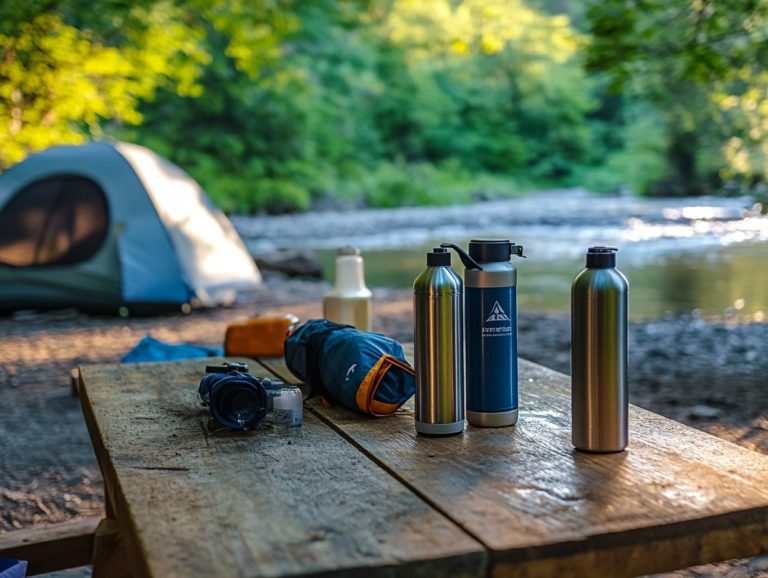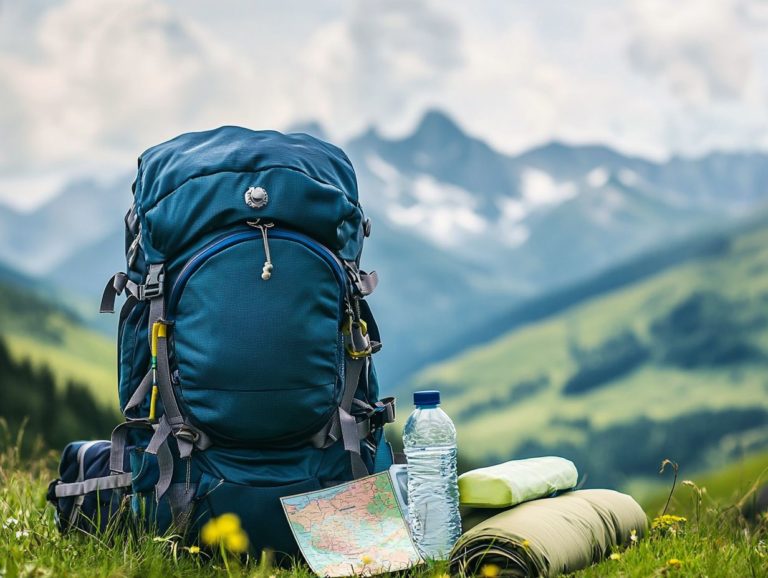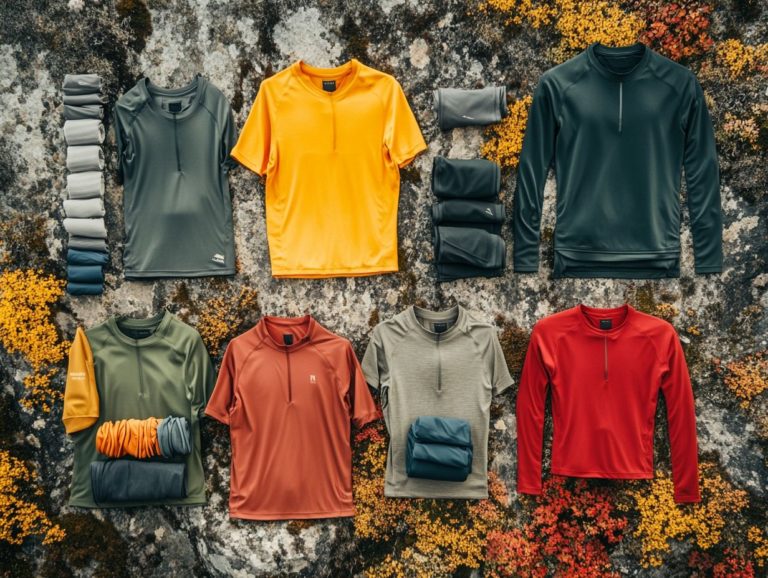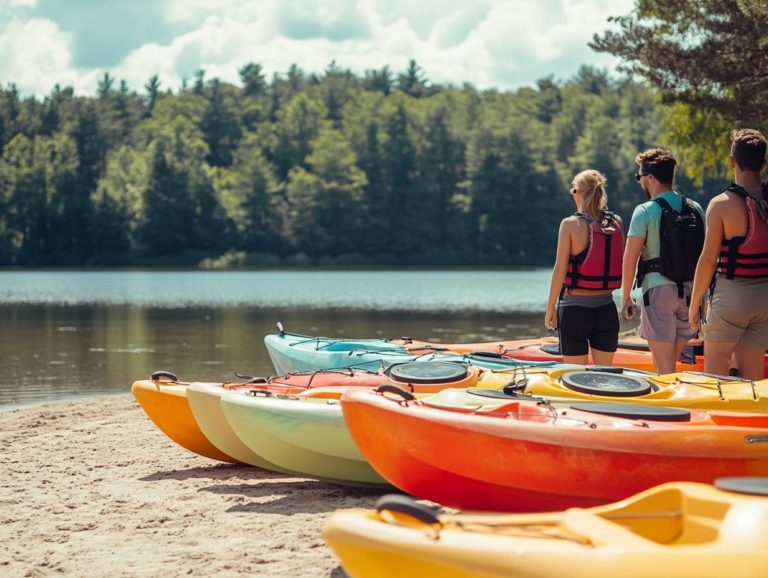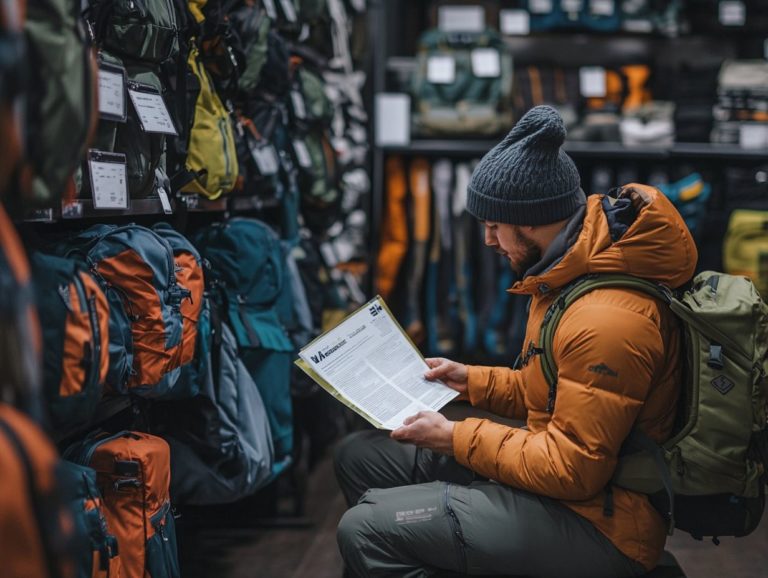What to Consider When Buying a Sleeping Bag?
Choosing the right sleeping bag can significantly enhance your outdoor experience, whether you re camping beneath a blanket of stars or trekking through the wilderness.
With many types, temperature ratings, and insulation materials at your disposal, it s crucial to understand what best meets your needs.
This guide delves into various designs, size and weight considerations, and additional features like waterproofing and zipper functionality.
You can also find budget-friendly options to ensure you get a great sleeping bag without overspending. Get ready for a fantastic night s sleep on your next adventure!
Contents
Key Takeaways:
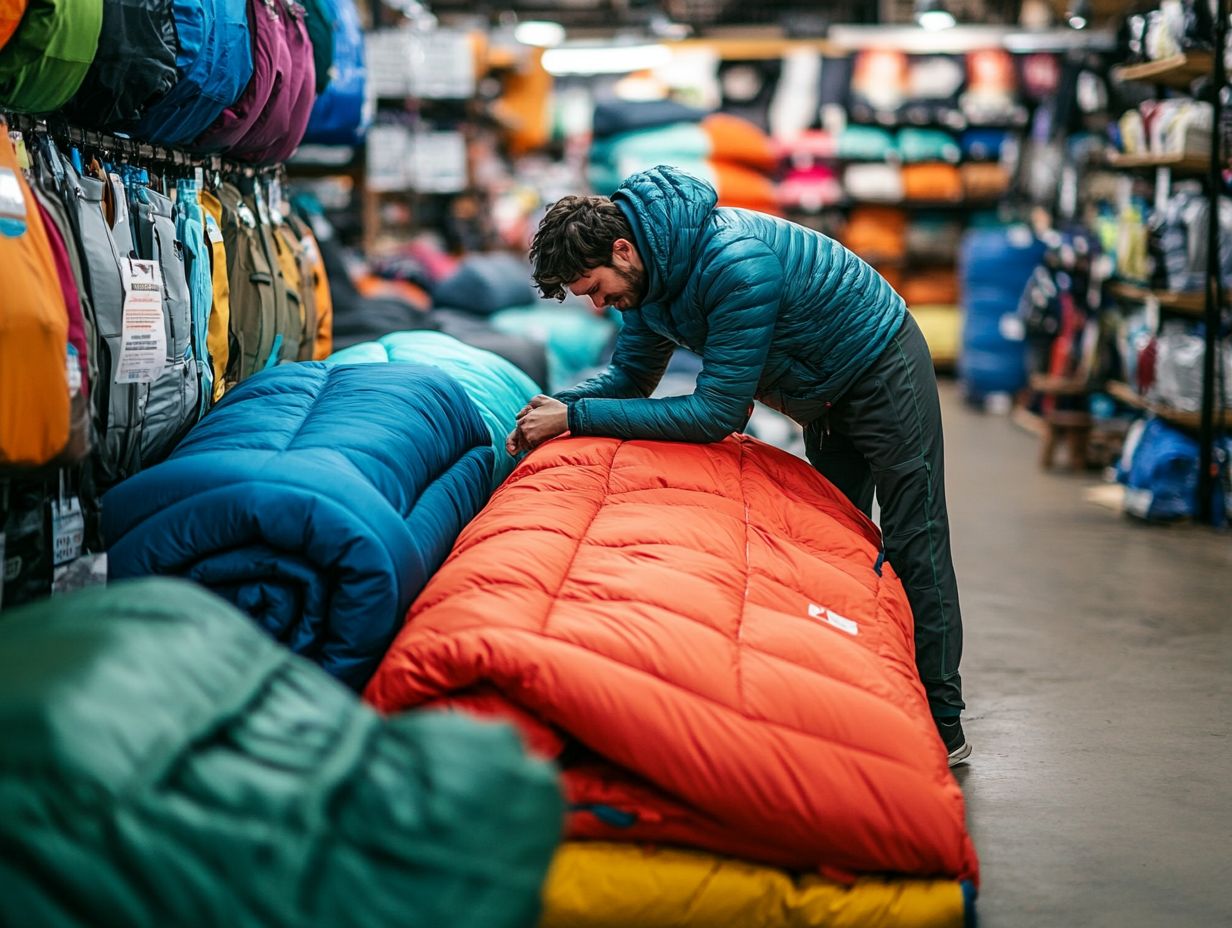
- Consider the type of sleeping bag that best suits your needs, whether it’s a rectangular, mummy, or semi-rectangular design.
- Take into account the temperature rating and comfort level of the sleeping bag, as well as the insulation material used, to ensure a comfortable night’s sleep in different weather conditions.
- Choose the right size and weight for your sleeping bag based on your body size and the type of camping or outdoor activity you’ll be using it for.
Types of Sleeping Bags
When choosing the perfect sleeping bag for your outdoor escapades, it s crucial to explore the various types available: mummy shape, rectangular shape, and semi-rectangular shape. Each design is tailored to meet different needs, preferences, and activities, whether you’re car camping or backpacking.
These shapes not only impact your comfort and warmth-to-weight ratio but also come with unique features that elevate your camping experience. Renowned brands like Klymit KSB and Sea to Summit offer outstanding options across these categories, ensuring you discover a sleeping bag that aligns perfectly with your adventures in the great outdoors.
Different Designs and Features
Different designs and features of sleeping bags can greatly influence their performance. Options vary from down insulation to synthetic materials, each offering unique advantages tailored to different camping conditions.
Take down insulation, for example: it s celebrated for its exceptional warmth-to-weight ratio, making it the go-to choice for backpackers who value packability without compromising comfort on those chilly nights. However, it s worth noting that when it gets wet, down can fall short, leaving you feeling rather uncomfortable.
On the flip side, synthetic materials shine in damp conditions, retaining their insulating properties even when the weather turns humid or unexpectedly rainy perfect for those unpredictable adventures.
Temperature ratings are another critical factor; a sleeping bag rated for a specific temperature ensures you stay snug throughout the night, which is essential for achieving restful sleep. Plus, features like waterproofing offer added protection against the elements, while user-friendly zippers make getting in and out of your bag a breeze.
Temperature Ratings
Understanding temperature ratings is essential for selecting the perfect sleeping bag. These ratings guide you in determining the comfort level tailored to different sleepers, whether you tend to run warm or cold.
Keep in mind that factors such as fill power and insulation type can significantly influence these ratings, ensuring you make an informed choice for a restful night’s sleep. Fill power refers to the loft or fluffiness of down insulation, indicating its ability to trap heat.
Understanding Temperature Ratings and Comfort Levels
Temperature ratings offer valuable insights for you as a camper, helping you align your sleeping bag with your unique sleep preferences, whether you’re a warm sleeper or a cold sleeper. This alignment is crucial for enhancing your overall comfort level during those nights outdoors.
By grasping these ratings, you can make informed choices that elevate your outdoor experience. When selecting a sleeping bag, it s vital to consider how various brands interpret these temperature ratings; after all, the same rating can feel remarkably different depending on whether the insulation is down or synthetic.
If you tend to run warm, you might find comfort in a bag rated for slightly lower temperatures. Conversely, if you often feel the chill, a roomier design that accommodates layering could be your best bet. Ultimately, your personal warmth needs should steer your decision, ensuring you enjoy a restful night beneath the stars.
Insulation Materials
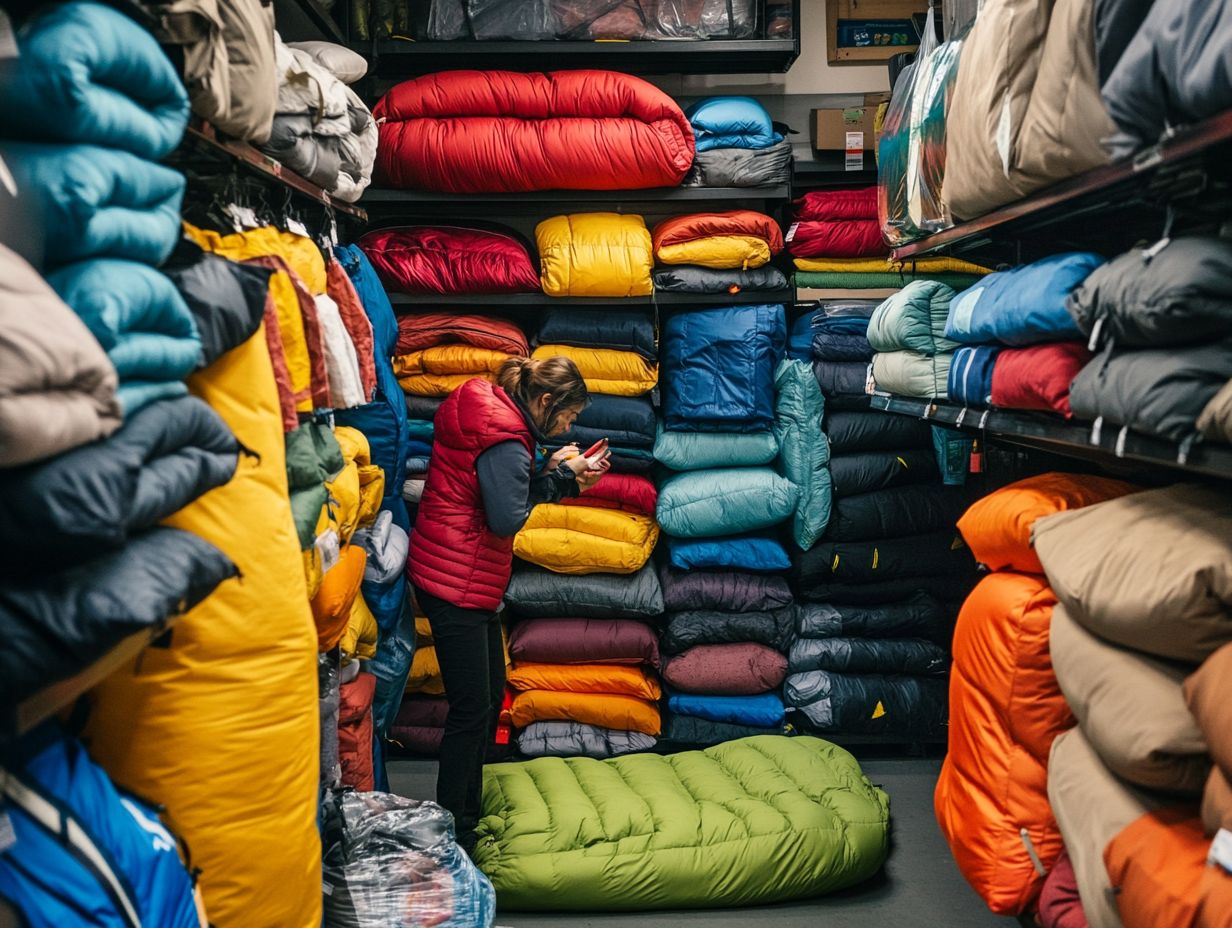
Choosing insulation materials for your sleeping bag is vital for performance. Your main options are down insulation and synthetic materials, which affect warmth and weight.
Down insulation has a fantastic warmth-to-weight ratio. It s ideal for keeping cozy during chilly adventures.
However, if down gets wet, it loses its warmth. This is an important factor to consider.
Synthetic materials, made from polyester fibers, stay warm even when wet. They re perfect for damp camping trips.
Fill power measures how fluffy down insulation is. The higher the fill power, the better it keeps you warm. In wet conditions, synthetic insulation often outperforms down.
As a camper, weigh these factors carefully. Choose the insulation that suits your camping conditions best.
Size and Weight
Choose the right size and weight now for an unforgettable adventure! Size and weight are crucial, especially for backpacking. A lightweight option can enhance your trail experience.
If you’re car camping, you can opt for more spacious models. Adding sleeping bag liners can provide extra comfort.
Choosing the Right Size and Weight for Your Needs
Choosing the right size and weight for your sleeping bag is crucial for comfort and performance during your outdoor adventures.
Consider your personal preferences. Do you prefer a roomy bag that allows for movement, or a snug fit that keeps you warm? This choice significantly influences your decision-making process.
Think about your camping style. Weight matters for backpacking, while car camping allows for more flexibility. This will help narrow down your options.
Explore additional accessories to enhance your sleeping experience. Liners can boost insulation and provide extra comfort for cozy nights beneath the stars.
Additional Features to Consider
Explore beyond basic insulation and size for a perfect night s sleep! Look for features like waterproofing, zipper quality, and enhancements that can elevate your camping experience.
These details can make a significant difference in comfort and functionality during your outdoor adventures.
Waterproofing, Zippers, and Other Factors
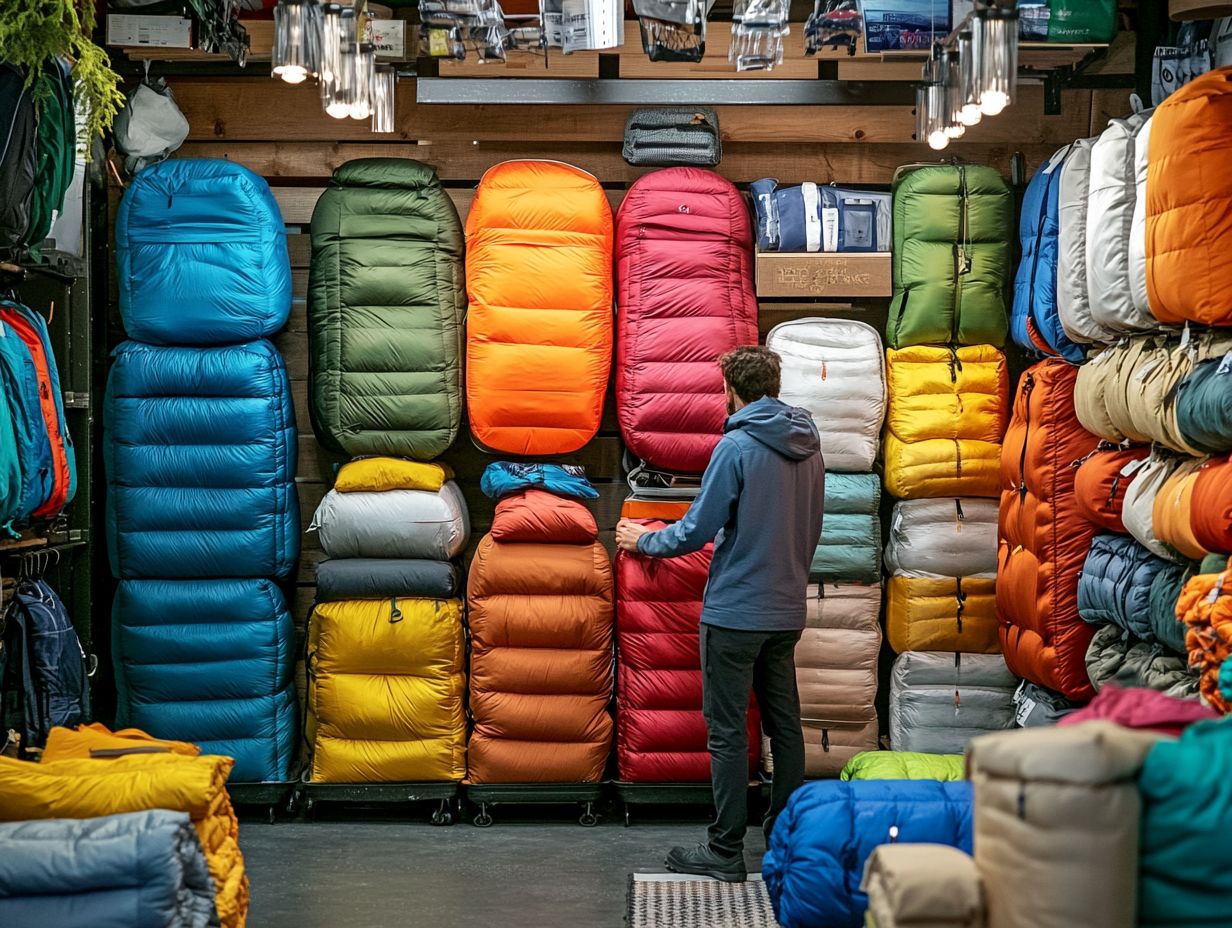
Waterproofing, the quality of zippers, and extra features are essential for the functionality of sleeping bags. These elements ensure they meet the demands of various camping environments.
When you’re out in the wild, staying dry enhances your comfort and safety, especially in unexpected rain or moisture. Different materials, like nylon and polyester, come with advanced water-resistant coatings that enhance performance while allowing for breathability. Zipper design is crucial too; thoughtfully positioned zippers provide easy access and contribute to insulation.
Consider factors like insulation type, packability, and weight. These elements shape your camping experience. Choosing a sleeping bag that harmonizes these features can make your nights under the stars truly enjoyable.
Budget Considerations
When choosing a sleeping bag, budget considerations are paramount. Understanding the price range and evaluating options from various outdoor retailers can help you uncover the best value without sacrificing quality.
This thoughtful approach ensures you make an informed decision and select a sleeping bag that meets your needs and expectations.
Finding the Best Value for Your Money
To find the best value for your money in sleeping bags, take a thoughtful approach to your budget. Ensure the product aligns with your needs without breaking the bank.
Compare various features such as insulation types, temperature ratings, and weight. The materials you choose matter; prioritize high-quality, durable fabrics that can withstand outdoor conditions. Understanding brand reputation can also impact your decision brands known for excellence often deliver the satisfaction you seek.
To stretch your budget further, watch for seasonal sales or discounts. Don t overlook reputable secondhand options, which can offer outstanding sleeping bags at a fraction of the retail price.
Frequently Asked Questions
What Should I Consider When Buying a Sleeping Bag?
When buying a sleeping bag, consider important factors to ensure it meets your needs. Key aspects include insulation type, temperature rating, size, weight, and features.
What Type of Insulation Should I Look For?
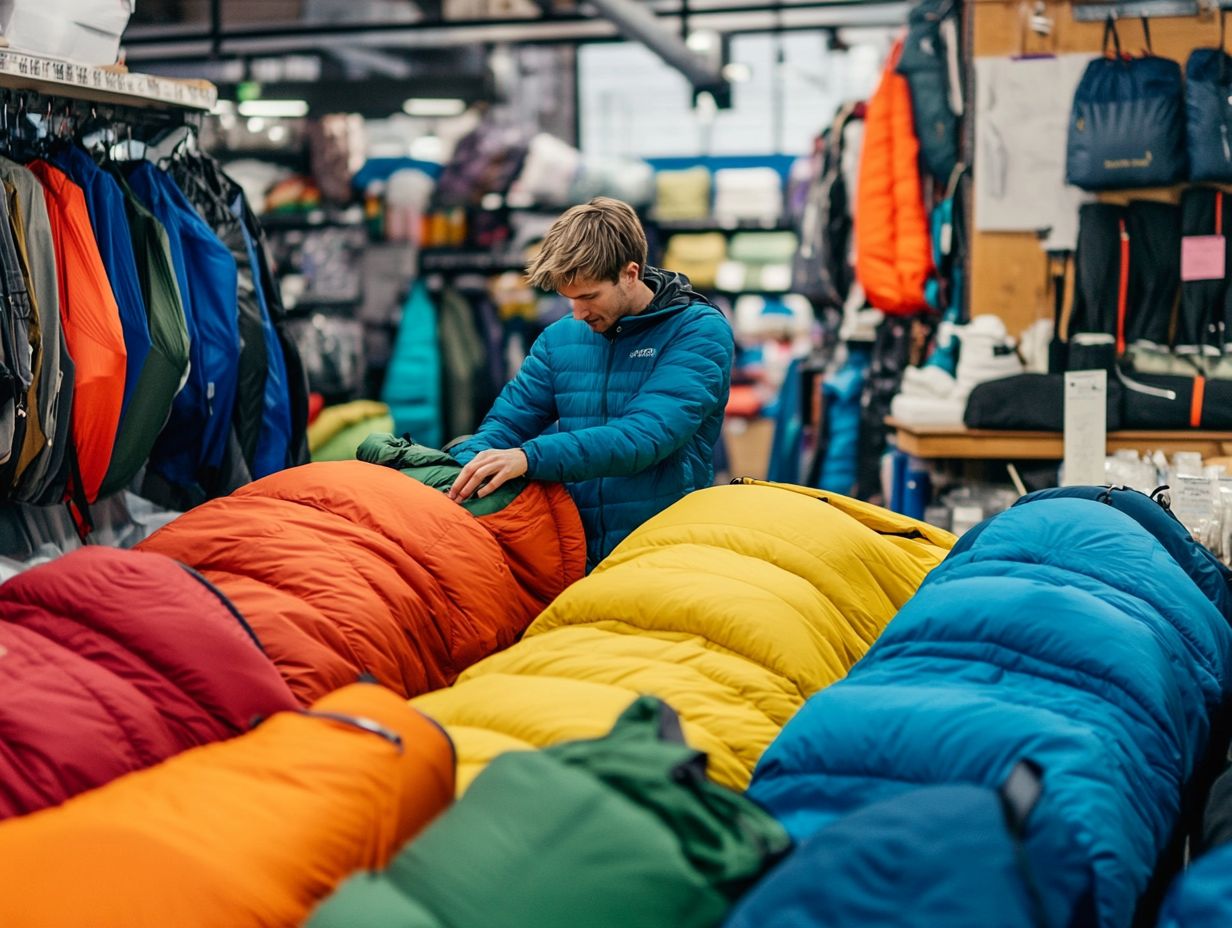
The most common insulation types are down and synthetic. Down is lightweight and offers excellent warmth but can be pricier and less effective in wet conditions. Synthetic insulation is more affordable and performs better when wet, though it may be bulkier and heavier.
What Temperature Rating Should I Choose?
Sleeping bags have various temperature ratings, usually ranging from 0 F to 40 F. Consider the climate and conditions where you’ll use the sleeping bag. If camping in colder temperatures, choose a bag with a lower temperature rating for comfort and safety.
What Size and Weight Should I Look For?
Sleeping bags come in different sizes and weights. Consider your body size and sleeping preferences when selecting a size. If you’ll be backpacking, choose a lightweight and compact option for easy transport.
What Features Should I Consider?
Look for features like a hood for added warmth, a zipper draft tube to block cold air, and a stuff sack for easy storage and transport. Also, consider if the sleeping bag can zip together with another for couples.
Are there any other factors to consider when buying a sleeping bag?
Are you ready to find the perfect sleeping bag? Besides those factors, consider the brand and price.
Research different brands and read reviews to ensure you are getting a good sleeping bag. A higher price may signal better quality, but always weigh this against your budget and the features that matter most to you.

